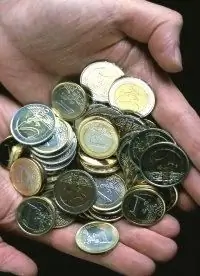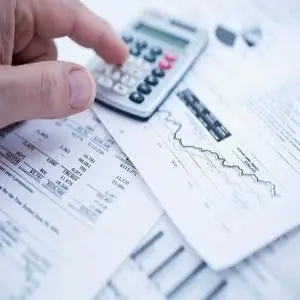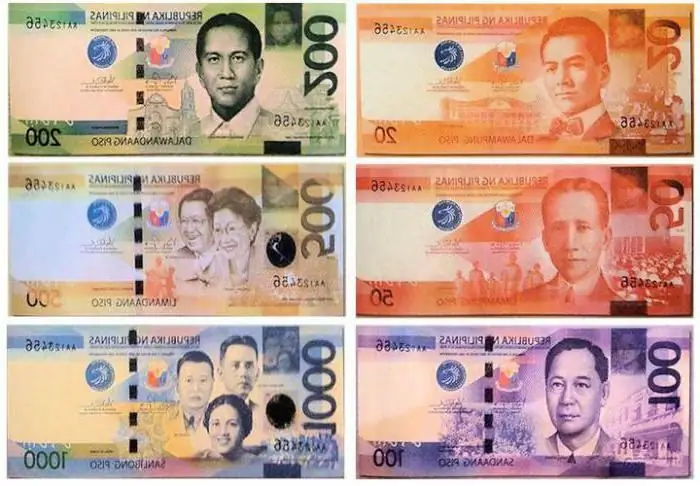2025 Author: Howard Calhoun | [email protected]. Last modified: 2025-01-24 13:10:39
Vietnam currency
Today, the national Vietnamese currency is dong. Worldwide

on the market it is referred to as VND or đ. The cost of one dong is very low and is about 22,000 units per one US dollar. In addition, theoretically, dong is divided into 100 sous or 10 hao, but due to their low purchasing power, they are not found in circulation. The currency of Vietnam is a non-convertible currency used only within the country and is subject to severe devaluation. In 2007, the Vietnamese government launched the latest reform, under which the dong should become a convertible currency that is weakly dependent on the dollar. However, to date, this reform has a different effect on the situation in the country, continuing the constant trend towards the depreciation of the national banknote. The Vietnamese currency against the ruble is correlated with the rate of 1 RUB=643 VND or 1000 VND=1.6 RUB, with a constant downward trend in the dong. Although the Russian currency can also demonstrate devaluation, only, as we all know, it likes to do it in a different, sudden way, without indicating any trends.
Vietnam cash
OnToday, the Vietnamese mostly use paper banknotes. They are distributed throughout the state and are well recognized by the population. All banknotes depict the leader of the Vietnamese socialist revolution, Ho Chi Minh,

and they are issued in denominations of 100, 200, 500, 1000, 2000, 5000, 10000, 20000, 50000, 100000, 200000 and 500000 VND. The abundance of zeros on banknotes is explained by the fact that the Vietnamese currency is very weak in terms of its purchasing power. In addition, Visa, MasterCard and American Express plastic cards can be used there, but the number of ATMs and payment terminals in the country is very limited. It is best to come to Vietnam with cash on hand.
History of Vietnamese money
The modern currency of Vietnam is called the "New Vietnamese Dong". The word "dong" literally means copper or bronze. The ancient Vietnamese used these materials as units of exchange, and it has become associated with money in modern Vietnamese people. Dong they now call any other currency. For example, the Vietnamese also call the ruble or dollar "dong", only with prefixes that denote monetary

belonging to a particular state ("rup" or "do_la"). The Vietnamese dong began its new history in 1946, in the northern part of the country. South Vietnam, since it was part of the colony, used the piastres of French Indochina even before 1952. The history of this state in the 20th century was filled witha large number of wars for independence from the influence of various empires, which all the time divided Vietnam into two parts, north and south. Also in the last century, the history of its currency was divided, until the unification of the state in 1975. But even after the victory of Vietnam and obtaining the right to be an integral nation in a single state in southeast Asia, he still had a large number of enemies who all the time tried to weaken the country, which avenged their defeat. Which, in turn, explains its weak economic position and the low exchange rate of the dong.
Recommended:
The currency of Finland. History, appearance, currency exchange rate

In this article, the reader will get acquainted with the currency of Finland, its history, appearance, and some other characteristics. In addition, you will find out where you can exchange money in Finland
Exchange rate differences. Accounting for exchange rate differences. Exchange differences: postings

The legislation that exists today in the Russian Federation, within the framework of Federal Law No. 402 "On Accounting" dated December 06, 2011, provides for the accounting of business transactions, liabilities and property strictly in rubles. Tax accounting, or rather its maintenance, is also carried out in the specified currency. But some receipts are not made in rubles. Foreign currency, in accordance with the law, must be converted
Currency of the Philippines: history, exchange rate against the ruble and the dollar, exchange

The article discusses the currency of the Philippines. It contains a brief historical overview, provides data on the exchange rate, contains information on where and how you can exchange the Philippine peso for the money of other countries
Vietnam: currency, its value and exchange

More and more countries are becoming available to our compatriot tourists. Exotics are still of interest to those for whom Crimea or, say, Arkhyz used to be the most unusual. And it is not surprising that the countries of Asia and the East attract unspoiled Russians and residents of the CIS with their bright and unusual way of life, peculiar customs - all that is called the word "exotic". Vietnam has recently taken a significant place in the list of these states
The currency of Montenegro, its denomination and history

Today, the euro is used unilaterally as the national currency of the Republic of Montenegro (since 01/01/2002). This currency is usually denoted by the symbol "€", it has the bank code EUR and the standard of the International Organization for Standardization ISO 4217

